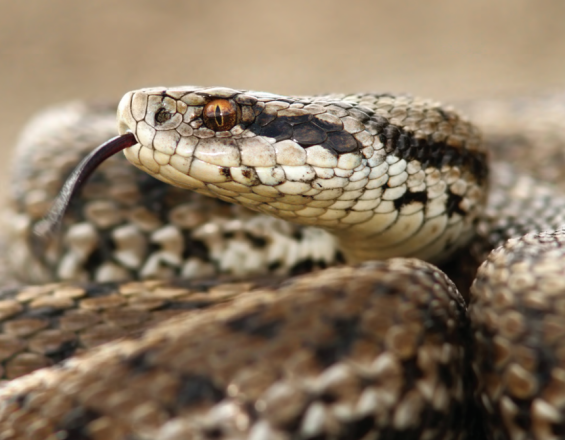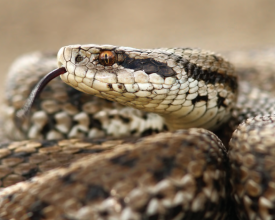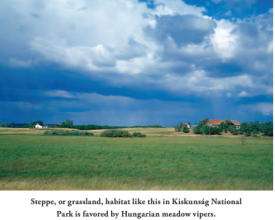
Aristocrats on the Steppe: Restoring a Homeland for Hungarian Meadow Vipers

These vipers have a long history regarding human activity in Eastern Europe. Native to multiple countries, they were integral to meadow ecosystems. Primarily because of agricultural endeavors, by the year 2000, the species was limited to only two sites in Hungary, and just 500 vipers were believed to survive in the wild. The Budapest Zoo approached CPSG in 2001 to lead a workshop where stakeholder groups with differing views of the meadow vipers’ situation could clarify the available information and address the issues surrounding the species’ decline. Facing many difficulties, CPSG helped facilitate a conservation plan involving buying and using farmland to create a breeding program.
Impacts
Today, over 3,200 Hungarian meadow vipers have been born at the breeding center, and more than 500 have been released into reconstructed grasslands nearby. Some reintroduced vipers have produced offspring. In areas where reconstructed habitat was connected to existing habitat, sightings of Hungarian meadow vipers increased during surveys. But humans aren’t the only ones seeing more snakes – predators are taking notice as well. That’s why a new project launched in November 2019 to tackle factors, such as predation, impacting the success of viper conservation efforts.







